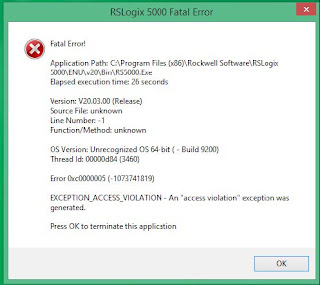What Is The Difference Between NEMA and IP ratings?

NEMA defines standards for various grades of electrical enclosures typically used in industrial applications. Each is rated to protect against designated environmental conditions. A typical NEMA enclosure might be rated to provide protection against environmental hazards such aswater, dust, oil or coolant or atmospheres containing corrosive agents such as acetylene or gasoline.
NEMA Type
|
Definition
|
1
|
General-purpose. Protects against dust, light, and indirect splashing but is not dust-tight; primarily prevents contact with live parts; used indoors and under normal atmospheric conditions.
|
2
|
Drip-tight. Similar to Type 1 but with addition of drip shields; used where condensation may be severe (as in cooling and laundry rooms).
|
3 and 3S
|
Weather-resistant. Protects against weather hazards such as rain and sleet; used outdoors on ship docks, in construction work, and in tunnels and subways.
|
3R
|
Intended for outdoor use. Provides a degree of protection against falling rain and ice formation. Meets rod entry, rain, external icing, and rust-resistance design tests.
|
4 and 4X
|
Watertight (weatherproof). Must exclude at least 65 GPM of water from 1-in. nozzle delivered from a distance not less than 10 ft for 5 min. Used outdoors on ship docks, in dairies, and in breweries. The 4X model has corrosion resistance.
|
5
|
Dust-tight. Provided with gaskets or equivalent to exclude dust; used in steel mills and cement plants.
|
6 and 6P
|
Submersible. Design depends on specified conditions of pressure and time; submersible in water or oil; used in quarries, mines, and manholes.
|
7
|
Hazardous. For indoor use in Class I, Groups A, B, C, and D environments as defined in the NEC.
|
8
|
Hazardous. For indoor and outdoor use in locations classified as Class I, Groups A, B, C, and D as defined in the NEC.
|
9
|
Hazardous. For indoor and outdoor use in locations classified as Class II, Groups E, F, or G as defined in the NEC.
|
10
|
MSHA. Meets the requirements of the Mine Safety and Health Administration, 30 CFR Part 18 (1978).
|
11
|
General-purpose. Protects against the corrosive effects of liquids and gases. Meets drip and corrosion-resistance tests.
|
12 and 12K
|
General-purpose. Intended for indoor use, provides some protection against dust, falling dirt, and dripping noncorrosive liquids. Meets drip, dust, and rust resistance tests.
|
13
|
General-purpose. Primarily used to provide protection against dust, spraying of water and noncorrosive coolants. Meets oil exclusion and rust resistance design tests.
|
The IP Code (Ingress Protection Rating, sometimes also interpreted as International Protection Rating of the letters IP followed by two digits or one digit and one letter and an optional letter. As defined in international standard IEC 60529, IP Code classifies and rates the degrees of protection provided against the intrusion of solid objects (including body parts like hands and fingers), dust, accidental contact, and water in mechanical casings and with electrical enclosures. The standard aims to provide users more detailed information than vague marketing terms such as waterproof.
First digit: Particle protection
Level
|
Object size protected against
|
Effective against
|
0
|
—
|
No protection against contact and ingress of objects
|
1
|
>50 mm
|
Any large surface of the body, such as the back of a hand, but no protection against deliberate contact with a body part
|
2
|
>12.5 mm
|
Fingers or similar objects
|
3
|
>2.5 mm
|
Tools, thick wires, etc.
|
4
|
>1 mm
|
Most wires, screws, etc.
|
5
|
Dust protected
|
Ingress of dust is not entirely prevented, but it must not enter in sufficient quantity to interfere with the satisfactory operation of the equipment; complete protection against contact
|
6
|
Dust tight
|
No ingress of dust; complete protection against contact
|
Second digit: Liquid protection
Level
|
Protected against
|
Testing for
|
Details
|
0
|
Not protected
|
—
|
—
|
1
|
Dripping water
|
Dripping water (vertically falling drops) shall have no harmful effect.
|
Test duration: 10 minutes
Water equivalent to 1mm rainfall per minute
|
2
|
Dripping water when tilted up to 15°
|
Vertically dripping water shall have no harmful effect when the enclosure is tilted at an angle up to 15° from its normal position.
|
Test duration: 10 minutes
Water equivalent to 3mm rainfall per minute
|
3
|
Spraying water
|
Water falling as a spray at any angle up to 60° from the vertical shall have no harmful effect.
|
Test duration: 5 minutes
Water volume: 0.7 litres per minute
Pressure: 80–100 kPa |
4
|
Splashing water
|
Water splashing against the enclosure from any direction shall have no harmful effect.
|
Test duration: 5 minutes
Water volume: 10 litres per minute
Pressure: 80–100 kPa |
5
|
Water jets
|
Water projected by a nozzle (6.3mm) against enclosure from any direction shall have no harmful effects.
|
Test duration: at least 3 minutes
Water volume: 12.5 litres per minute
Pressure: 30 kPa at distance of 3m |
6
|
Powerful water jets
|
Water projected in powerful jets (12.5mm nozzle) against the enclosure from any direction shall have no harmful effects.
|
Test duration: at least 3 minutes
Water volume: 100 litres per minute
Pressure: 100 kPa at distance of 3m |
7
|
Immersion up to 1 m
|
Ingress of water in harmful quantity shall not be possible when the enclosure is immersed in water under defined conditions of pressure and time (up to 1 m of submersion).
|
Test duration: 30 minutes
Immersion at depth of 1m
|
8
|
Immersion beyond 1 m
|
The equipment is suitable for continuous immersion in water under conditions which shall be specified by the manufacturer. Normally, this will mean that the equipment is hermetically sealed. However, with certain types of equipment, it can mean that water can enter but only in such a manner that it produces no harmful effects.
|
Test duration: continuous immersion in water
Depth specified by manufacturer
|
IP vs NEMA
IP Code
|
Min. NEMA Enclosure rating to satisfy IP Code
|
IP20
|
1
|
IP54
|
3, 13
|
IP66
|
4, 4X
|
IP67
|
6, 6P
|
IP68
|
6P
|
IP11
|
2
|
IP14
|
3R
|
IP54
|
3S, 3
|
IP52
|
5, 12, 12K
|
The table above indicates the minimum NEMA rating that satisfies a given IP code, but can only be used in that way, not to map IP to NEMA.
IP69K
German standard DIN 40050-9 extends the IEC 60529 rating system described above with an IP69K rating for high-pressure, high-temperature wash-down applications. Such enclosures must not only be dust tight (IP6X), but also able to withstand high-pressure and steam cleaning.
The test specifies a spray nozzle that is fed with 80°C water at 8–10MPa (80–100bar) and a flow rate of 14–16L/min. The nozzle is held 10–15 cm from the tested device at angles of 0°, 30°, 60° and 90° for 30s each. The test device sits on a turntable that rotates once every 12s (5rpm).
The IP69K test specification was initially developed for road vehicles, especially those that need regular intensive cleaning (dump trucks, cement mixers, etc.), but also finds use in other areas (e.g., food industry, car wash centres).
The test specifies a spray nozzle that is fed with 80°C water at 8–10MPa (80–100bar) and a flow rate of 14–16L/min. The nozzle is held 10–15 cm from the tested device at angles of 0°, 30°, 60° and 90° for 30s each. The test device sits on a turntable that rotates once every 12s (5rpm).
The IP69K test specification was initially developed for road vehicles, especially those that need regular intensive cleaning (dump trucks, cement mixers, etc.), but also finds use in other areas (e.g., food industry, car wash centres).



Comments
Post a Comment